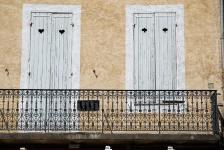|
Stud Stud |
Manufactured or assembled in France from (Circa) 1946 to (Circa) 1950.
Index of rarity in France: Rare (among non-specialized garage sales)
Inventory number: 9097
See the complete technical specifications
Chronology of cameras Stud
When you see the size of the Stud camera when fully extended, approximately one meter in length and 60 centimeters in height, with a weight of nearly 10 kg, it's hard to believe that it's just a "small" large format 9 x 12 cm camera.
However, things become clearer when you take a closer look. For example, the viewfinder consists of three mirrors of the same size: the usual one in the chamber that lifts when the shutter is released, and two other fixed mirrors that reflect the image upright (vertically but not horizontally) at the back. To facilitate viewing, the operator sits behind the machine with a veil above them held by metal hoops resembling the handles of a tiller!
The size of the lens is just as imposing as the rest: a substantial 300 mm Boyer lens, whereas the normal focal length for the format is 150 mm. Mounted on a board, it can be tilted using a single vertical tilt, with the adjustment visible through the long threaded rod on the side.
Beyond the size and appearance of the device, its mechanics also hold some surprises.
For instance, the raising and lowering of the mirror are activated by a simple cord that winds around a large wooden cylinder. Inside this cylinder, a spring, adjusted by a wheel on the side of the chamber, allows for more or less rapid movement of the mirror; furthermore, the tension of the spring can be reset to prevent "fatigue" when the camera is not in use.
Another curiosity is the focal plane shutter. Every time I try to operate the camera, I have some difficulty figuring out where to start... The shutter resembles a watch mechanism, with, in addition to the T (time) setting, three ranges of 10 speeds, providing a total of 30 different settings (not counting T)! The two curtains move more or less rapidly, leaving an aperture of varying size according to these settings.
As the name suggests, this is a studio camera that is difficult to move. Its revolving back turns it into a square-format camera, allowing for easy switching between landscape and portrait modes (and vice versa) without tilting the camera. When the back is turned, a small mechanical system with an angle indicator allows you to roughly determine whether the portrait or landscape mode is in use.
Finally, when you follow the flash synchronization circuits after exploring the rest, you're less surprised by the complexity of it all: a whole wiring system inside the "beast," with three contacts that open or close depending on the position of certain elements. Among these contacts, to one's surprise, there's one with mercury! In series with another simple contact on the curtain, it follows the movement of the mirror and activates when it is fully raised. It is connected externally to a terminal for high-power lighting.
The rear body of the camera, including the viewfinder and the shutter, moves by sliding on the wooden base. It is secured by a nut on each side, while the front body with the lens moves on a rail with the help of a side wheel. To reduce its size, the front body can be slid against the rear body in such a way that the bellows are no longer visible.
This is indeed a camera that, despite its unflattering aesthetics, is full of interesting and sometimes quirky features!
The Stud brand was the property of the Liabeuf Establishments, named after the inventor Henri-Emile Liabeuf.

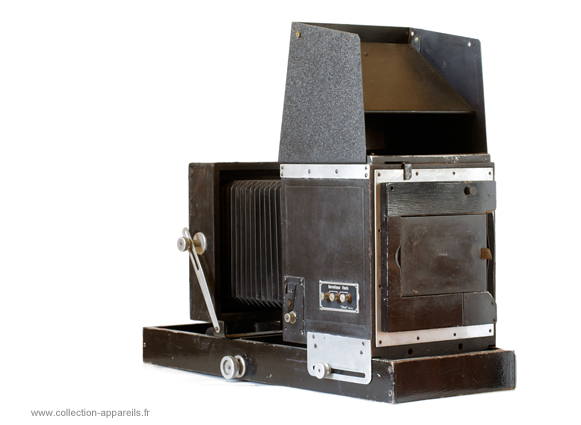
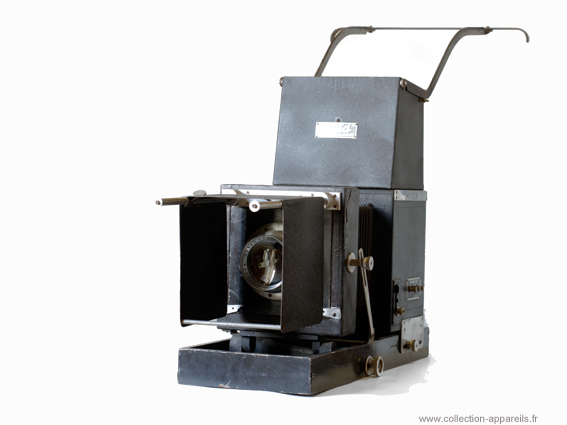
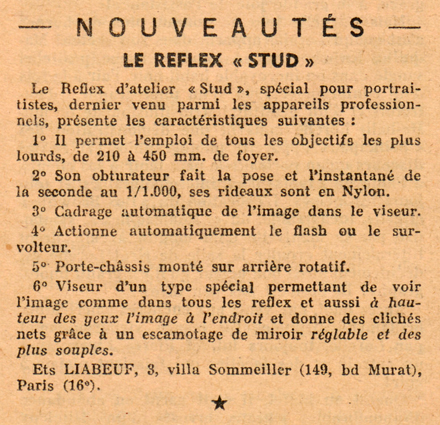
Henri Emile Liabeuf
Henri Emile Liabeuf was born on July 1, 1891, in Paris 18th district. He worked as a photographic emulsion verifier and photographer until March 19, 1910, when he enlisted in the Army for three years. He was assigned to the 1er Régiment de Génie and served a campaign in Morocco from February 20, 1912, to January 30, 1913. On October 1, 1912, he was transferred to the aviation section of the 2ème régiment de Génie. After completing his three years of service, he was discharged from active duty on March 19, 1913, with a certificate of good conduct.
Following the general mobilization, he was recalled and joined the 1er Régiment de Génie on August 3, 1914. In December 1914, he transitioned to aviation (SPA) as a photographer. He spent several weeks in the Senlis hospital in the spring of 1917.
By ministerial decision, he was assigned to the French Aviation Mission near the American army1 on October 2, 1917, and made available to the Grand Headquarters on October 23, 1918. He was granted an unlimited demobilization leave on August 13, 1919. The Seine Medical Board initially awarded him a temporary disability pension for chronic bronchitis and mild residual malaria (bi-monthly crises), which he contracted in Salonica2. The temporary pension was subsequently renewed multiple times.
As a reservist, he was attached to the 4ème bataillon of 1er Régiment du Génie, then to the 1er groupe d'aérostation, then to the 1er Bataillon de l'Air, and finally to the 15ème Compagnie de l'Air at the Chalais-Meudon Air Base.
Henri-Emile Liabeuf was a prolific inventor who filed numerous patents in the field of photography from the early 1920s to the mid-1950s.
 Some of these patents found their application in Stud cameras manufactured by the Liabeuf Establishments, which were located at Villa Sommeiler in Paris 16. Looking at this tiny Parisian street, it is immediately apparent that it was not a large enterprise and that production was likely very limited.
Some of these patents found their application in Stud cameras manufactured by the Liabeuf Establishments, which were located at Villa Sommeiler in Paris 16. Looking at this tiny Parisian street, it is immediately apparent that it was not a large enterprise and that production was likely very limited.Henri Emile Liabeuf passed away on April 5, 1974, in Paris 14.
Although no photograph of H.E. Liabeuf could be found, his military record describes him as having blue eyes, chestnut hair, a large nose on an oval face, and a height of 168 cm. His level of general education is noted as 33.
1 This mission aimed to facilitate the rapid integration of the American army into the allied forces, particularly through the supply of French equipment.
2 His military record does indeed mention the Army of the Orient and the Serbian Army, but the corresponding assignments are not listed in the registration book.
3
Degree 0: Cannot read or write |
Interesting links or bibliography :
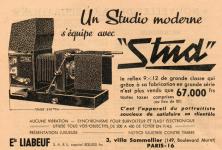 Le Photographe de 1948 | 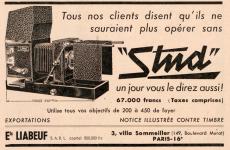 Le Photographe de 1949 | 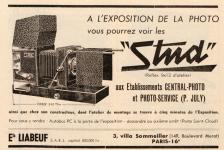 Le Photographe de 1950 |
Add a link or element of bibliography, a picture taken with this camera, a picture of box or an ads about this camera
Your photos taken with the same camera:
Cameras from Ebay France (Stud) (Uploaded each 3 hours)







